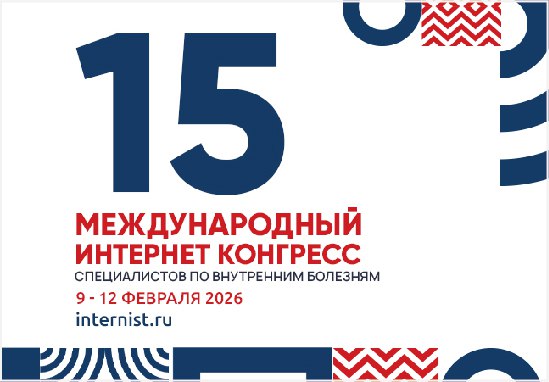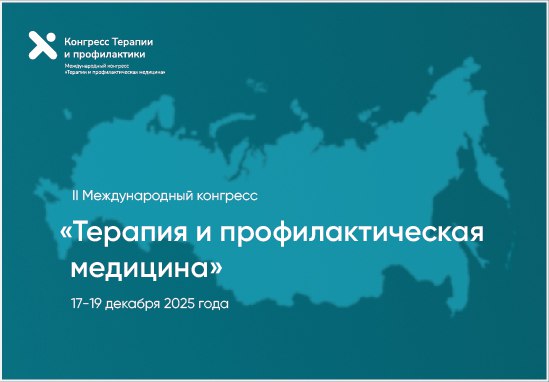Functional state of terminal muscular arteries and distributing arterioles in men with different levels of psychosocial stress
https://doi.org/10.20996/1819-6446-2025-3217
EDN: IHECFM
Abstract
Aim. To study the functional state of terminal muscular arteries and distributing arterioles using transmission photoplethysmography (PPG) in men of working age with different levels of psychosocial stress (PS).
Material and methods. 200 men (50.9±1.0 years) underwent physical examination, anthropometry, assessment of the PS level using the Reeder test adapted by O. S. Kopina, biochemical blood test (total cholesterol (TC) and lipid profile, glucose, C-reactive protein), 24-hour ambulatory blood pressure monitoring (ABPM) and transmission PPG of the left-hand index finger. All subjects were classified into 5 ordered groups depending on the distribution of stress indicators by quintiles: Group 1 consisted of 43 men with low stress level (3.57-4.0 points), Group 2 – 38 men with medium-low level (3.28-3.43 points), Group 3 – 41 men with medium level (2.9-3.14 points), Group 4 – 47 men with medium-high level (2.57-2.9 points), and Group 5 – 31 men with high stress level (1.43-2.57 points).
Results. The results of the primary analysis demonstrated a significant increase in pulse wave velocity (aSI) in working-age men with increasing PS level (p=0.042), as well as a non-significant trend towards greater vascular stiffness (Alp75) of terminal muscular arteries and distributing arterioles in the moderate and moderatehigh PS groups (p=0.089). Results of multiple regression analysis adjusted for body mass index, ABPM, smoking, cholesterol, and drug therapy demonstrated that arterial stiffness (Alp75) was higher in the groups with medium (B=6.18; p=0.026) and medium-high (B=6.27; p=0.023) PS levels compared to high. No reliable associations were found between the PS level and the pulse wave velocity (aSI) and smooth muscle tone (RI) of the studied vessels in men of working age.
Conclusion. In men of working age with medium and medium-high PS levels, an increase in vascular stiffness, in addition to elastic and large-elastic arteries, can also develop at the level of terminal muscular arteries and distributing arterioles. Reducing the level of PS with a possible concomitant decrease in arterial stiffness in order to reduce the risk of development and progression of cardiovascular diseases and improve the quality of life of patients seems to be an urgent therapeutic task.
Keywords
About the Authors
O. Yu. IsaykinaRussian Federation
Olesya Yu. Isaykina
Moscow
A. I. Korolev
Russian Federation
Andrew I. Korolev
Moscow
M. B. Kotova
Russian Federation
Marina B. Kotova
Moscow
M. G. Chashchin
Russian Federation
Mikhail G. Chashchin
Moscow
P. A. Chernousov
Russian Federation
Pavel A. Chernousov
Moscow
S. A. Maksimov
Russian Federation
Sergey A. Maksimov
Moscow
A. A. Fedorovich
Russian Federation
Andrey A. Fedorovich
Moscow
A. Yu. Gorshkov
Russian Federation
Alexander Yu. Gorshkov
Moscow
V. M. Gorbunov
Russian Federation
Vladimir M. Gorbunov
Moscow
References
1. Benjamin EJ, Virani SS, Callaway CW, et al.; American Heart Association Council on Epidemiology and Prevention Statistics Committee and Stroke Statistics Subcommittee. Heart disease and stroke statistics — 2018 Update: A Report From the American Heart Association. Circulation. 2018;137(12):e67-492. DOI:10.1161/CIR.0000000000000558. Erratum in: Circulation. 2018;137(12):e493. DOI:10.1161/CIR.0000000000000573.
2. Rozanski A. Psychosocial risk factors and cardiovascular disease: epidemiology, screening, and treatment considerations. Cardiovascular Innovations and Applications. 2016;1(4):417-31. DOI:10.15212/CVIA.2016.0033.
3. Pogosova NV, Boitsov SA, Oganov RG, et al. Psychosocial Risk Factors in Ambulatory Patients With Arterial Hypertension and Ischemic Heart Disease of 30 Cities in Russia: Data from the КОМЕТА (Comet) Study. Kardiologiia. 2018;58(11):5-16. (In Russ.) DOI:10.18087/cardio.2018.11.10193.
4. Kotova M., Rozanov V., Aleksandrov A., Drapkina O. Association of psychosocial stress with the social environment, lifestyle and risk factors for cardiovascular diseases in middle-aged male Muscovites. Russian Journal of Cardiology. 2021;26(5):4335. (In Russ.) DOI:10.15829/1560-4071-2021-4335.
5. Picard K, St-Pierre MK, Vecchiarelli HA, et al. Neuroendocrine, neuroinflammatory and pathological outcomes of chronic stress: A story of microglial remodeling. Neurochem Int. 2021;145:104987. DOI:10.1016/j.neuint.2021.104987.
6. Nielsen NR, Kristensen TS, Prescott E, et al. Perceived stress and risk of ischemic heart disease: causation or bias? Epidemiology. 2006;17(4):391-7. DOI:10.1097/01.ede.0000220556.86419.76.
7. Gomanova LI, Balanova YuA, Shalnova SA, et al. Medical and social portrait of a person with a high level of psycho-emotional stress — justification for the prevention of chronic non-communicable diseases. data from ESSE-RF and ESSERF2. Complex Issues of Cardiovascular Diseases. 2025;14(1):37-50. (In Russ.) DOI:10.17802/2306-1278-2025-14-1-37-50.
8. Sara JDS, Toya T, Ahmad A. et al. Mental Stress and Its Effects on Vascular Health. Mayo Clin Proc. 2022;97(5):951-90. DOI:10.1016/j.mayocp.2022.02.004.
9. Plante GE. Vascular response to stress in health and disease. Metabolism. 2002;51(6 Suppl 1):25-30. DOI:10.1053/meta.2002.33187.
10. Gallo LC, Roesch SC, Fortmann AL, et al. Associations of chronic stress burden, perceived stress, and traumatic stress with cardiovascular disease prevalence and risk factors in the Hispanic Community Health Study/Study of Latinos Sociocultural Ancillary Study. Psychosom Med. 2014;76(6):468-75. DOI:10.1097/PSY.0000000000000069.
11. Gafarov V.V., Gromova E.A., Gagulin I.V., Gafarova A.V. Effects of stress on risk of arterial hypertension in general male population of 25 -64 years old: 14 years of follow up (epidemiological study on the basis of the WHO program «MONICA — PSYCHOSOCIAL»). “Arterial’naya Gipertenziya” (“Arterial Hypertension”). 2013;19(1):27-31. (In Russ.) DOI:10.18705/1607-419X-2013-19-1-27-31.
12. McDermott CE, Salowe RJ, Di Rosa I, O’Brien JM. Stress, Allostatic Load, and Neuroinflammation: Implications for Racial and Socioeconomic Health Disparities in Glaucoma. Int J Mol Sci. 2024;25(3):1653. DOI:10.3390/ijms25031653.
13. Kopina OS, Souslova EA, Zaikin EV. Population studies of psychosocial stress as a risk factor for cardiovascular diseases. Kardiologiia. 1996;(3):53-6. (In Russ.)
14. Rosengren A, Hawken S, Ounpuu S, et al.; INTERHEART investigators. Association of psychosocial risk factors with risk of acute myocardial infarction in 11119 cases and 13648 controls from 52 countries (the INTERHEART study): case-control study. Lancet. 2004;364(9438):953-62. DOI:10.1016/S0140-6736(04)17019-0.
15. Santosa A, Rosengren A, Ramasundarahettige C, et al. Psychosocial Risk Factors and Cardiovascular Disease and Death in a Population-Based Cohort From 21 Low-, Middle-, and High-Income Countries. JAMA Netw Open. 2021;4(12):e2138920. DOI:10.1001/jamanetworkopen.2021.38920. Erratum in: JAMA Netw Open. 2022;5(4):e2210663. DOI:10.1001/jamanetworkopen.2022.10663.
16. Osipova IV, Pyrikova NV, Antropova ON, et al. Effect of Psychosocial Stress on the Level of Anxiety, Depression and Behavioral Risk Factors of Cardiovascular Diseases in Men. Kardiologiia. 2014;54(3):42-5. (In Russ.)
17. Fleshner M, Crane CR. Exosomes, DAMPs and miRNA: Features of Stress Physiology and Immune Homeostasis. Trends Immunol. 2017;38(10):768-76. DOI:10.1016/j.it.2017.08.002.
18. Mocayar Marón FJ, Ferder L, Saraví FD, Manucha W. Hypertension linked to allostatic load: from psychosocial stress to inflammation and mitochondrial dysfunction. Stress. 2019;22(2):169-81. DOI:10.1080/10253890.2018.1542683.
19. Massamba VK, Talbot D, Milot A, et al. Association between psychosocial work-related factors at midlife and arterial stiffness at older age in a prospective cohort of 1736 white-collar workers. BMJ Open. 2023;13(9):e073649. DOI:10.1136/bmjopen-2023-073649.
20. Liu MY, Li N, Li WA, Khan H. Association between psychosocial stress and hypertension: a systematic review and meta-analysis. Neurol Res. 2017;39(6):573-80. DOI:10.1080/01616412.2017.1317904.
21. Kaplan JR, Pettersson K, Manuck SB, Olsson G. Role of sympathoadrenal medullary activation in the initiation and progression of atherosclerosis. Circulation. 1991;84(6 Suppl):VI23-32.
22. Rhee MY, Na SH, Kim YK, et al. Acute effects of cigarette smoking on arterial stiffness and blood pressure in male smokers with hypertension. Am J Hypertens. 2007;20(6):637-41. DOI:10.1016/j.amjhyper.2006.12.017.
23. Adamopoulos D, Argacha JF, Gujic M, et al. Acute effects of nicotine on arterial stiffness and wave reflection in healthy young non-smokers. Clin Exp Pharmacol Physiol. 2009;36(8):784-9. DOI:10.1111/j.1440-1681.2009.05141.x.
24. Argacha JF, Adamopoulos D, Gujic M, et al. Acute effects of passive smoking on peripheral vascular function. Hypertension. 2008;51(6):1506-11. DOI:10.1161/HYPERTENSIONAHA.107.104059.
25. Goebel I, Mohr T, Axt PN, et al. Impact of Heated Tobacco Products, E-Cigarettes, and Combustible Cigarettes on Small Airways and Arterial Stiffness. Toxics. 2023;11(9):758. DOI:10.3390/toxics11090758.
26. Hooglugt A, Klatt O, Huveneers S. Vascular stiffening and endothelial dysfunction in atherosclerosis. Curr Opin Lipidol. 2022;33(6):353-63. DOI:10.1097/MOL.0000000000000852.
27. Lacolley P, Regnault V, Segers P, Laurent S. Vascular Smooth Muscle Cells and Arterial Stiffening: Relevance in Development, Aging, and Disease. Physiol Rev. 2017;97(4):1555-617. DOI:10.1152/physrev.00003.2017.
28. Durham AL, Speer MY, Scatena M, et al. Role of smooth muscle cells in vascular calcification: implications in atherosclerosis and arterial stiffness. Cardiovasc Res. 2018;114(4):590-600. DOI:10.1093/cvr/cvy010.
29. Avolio A, Jones D, Tafazzoli-Shadpour M. Quantification of alterations in structure and function of elastin in the arterial media. Hypertension. 1998;32(1):170-5. DOI:10.1161/01.hyp.32.1.170.
30. Seravalle G, Mancia G, Grassi G. Role of the sympathetic nervous system in hypertension and hypertension-related cardiovascular disease. High Blood Press Cardiovasc Prev. 2014;21(2):89-105. DOI:10.1007/s40292-014-0056-1.
31. Goodson ML, Packard AEB, Buesing DR, et al. Chronic stress and Rosiglitazone increase indices of vascular stiffness in male rats. Physiol Behav. 2017;172:16-23. DOI:10.1016/j.physbeh.2016.03.031.
32. Macefield VG. Recording and quantifying sympathetic outflow to muscle and skin in humans: methods, caveats and challenges. Clin Auton Res. 2021;31(1):59-75. DOI:10.1007/s10286-020-00700-6.
33. Quarti-Trevano F, Dell’Oro R, Cuspidi C, et al. Endothelial, Vascular and Sympathetic Alterations as Therapeutic Targets in Chronic Heart Failure. Biomedicines. 2023;11(3):803. DOI:10.3390/biomedicines11030803.
34. Egan B, Grassi G. Sympathetic activation and endothelial dysfunction as therapeutic targets in obesity-related hypertension. J Hypertens. 2013;31(2):259-60. DOI:10.1097/HJH.0b013e32835d0dcf.
35. Holwerda SW, Luehrs RE, DuBose LE, et al. Sex and age differences in the association between sympathetic outflow and central elastic artery wall thickness in humans. Am J Physiol Heart Circ Physiol. 2019;317(3):H552-60. DOI:10.1152/ajpheart.00275.2019.
36. Harvey RE, Barnes JN, Hart EC, et al. Influence of sympathetic nerve activity on aortic hemodynamics and pulse wave velocity in women. Am J Physiol Heart Circ Physiol. 2017;312(2):H340-46. DOI:10.1152/ajpheart.00447.2016.
37. Bruno RM, Ghiadoni L, Seravalle G, et al. Sympathetic regulation of vascular function in health and disease. Front Physiol. 2012;3:284. DOI:10.3389/fphys.2012.00284.
Supplementary files
Review
For citations:
Isaykina O.Yu., Korolev A.I., Kotova M.B., Chashchin M.G., Chernousov P.A., Maksimov S.A., Fedorovich A.A., Gorshkov A.Yu., Gorbunov V.M. Functional state of terminal muscular arteries and distributing arterioles in men with different levels of psychosocial stress. Rational Pharmacotherapy in Cardiology. 2025;21(4):327-334. (In Russ.) https://doi.org/10.20996/1819-6446-2025-3217. EDN: IHECFM
















































